Haida artist invites Vancouver community to hammer home message of reconciliation on massive totem pole
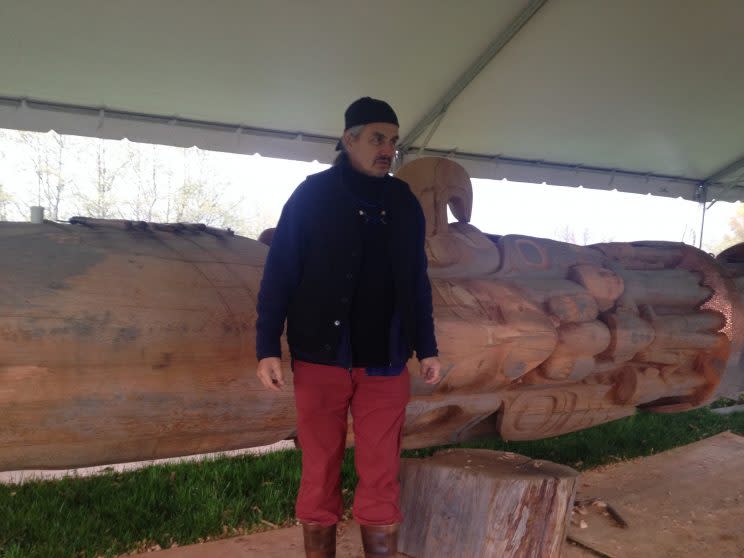
Behind the Museum of Anthropology at UBC, a 40-metre, 800-year-old red cedar is being transformed into a monument that recognizes a dark part of Canada’s history.
The University of British Columbia partnered with philanthropist Michael Audain to commission Haida artist James Hart to work on the totem, dubbed The Reconciliation Pole.
The work will pay tribute to victims of residential schools, the government-sponsored institutions which were open between 1883 and 1996. The schools were meant to assimilate Indigenous children into mainstream Canadian culture. In the process, 150,000 children were separated from their families, often being forced to abandon their native language.
In a report released last year, the Truth and Reconciliation Commission denounced the program as a “cultural genocide.”
The Commission found evidence that as many as 3,000 children had died in the schools, though Hart maintains the number is much higher than the official record, putting it around 57,000.
The master carver began work on the pole two years ago near his home on Haida Gwaii, B.C. It was recently moved by barge to the Vancouver university campus for the finishing touches. Hart is welcoming people from the community, particularly children, to visit the site and help construction by hammering copper nails into the massive pole.
Hart spoke to Yahoo Canada News recently about the project and what it symbolizes. Below are his edited and condensed remarks.
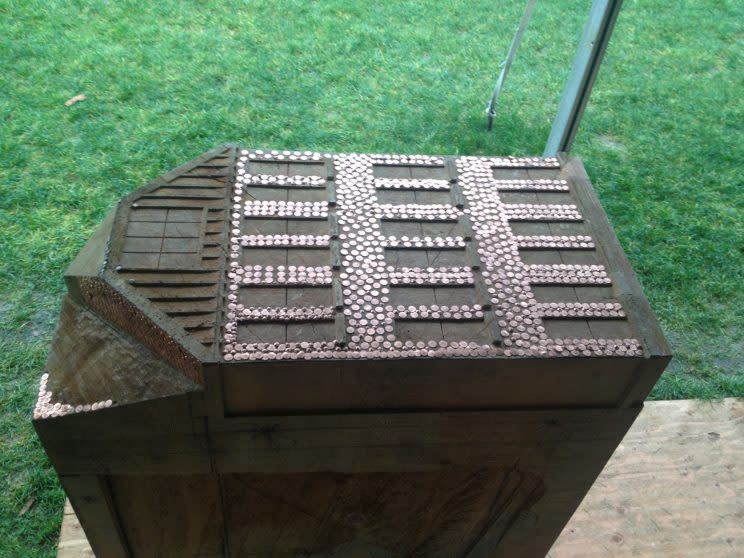
History reveals itself
As we go along, more of the stuff that happened at the residential schools unfolds all the time for me. It becomes tough sometimes to work away on this project because it’s right there as you’re working. Then you kind of have to let it go to move on.
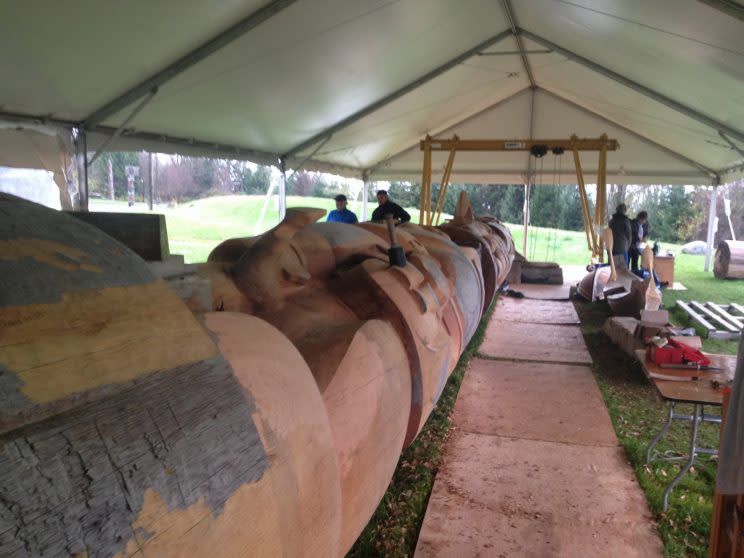
Reconciliation is what it’s all about. It’s about the residential schools and what happened there. But it’s also about a future. We’re hoping we work together and go off together in the future, working things out and carrying on together.
This is a horrendous part of Canada’s history, and our history, native communities across Canada. It was there to hurt, it wasn’t there to help. It was designed to bug up our culture, our language. And so what’s happening now, the survivors from the schools are dealing with it the best way they can. Some of them can’t talk about it. Others are talking about it. They all have a story, an amazing story of surviving all this.
We got youth, today, that are actually starting to get around that, without it in their system. They’re going to school, being educated, becoming doctors and lawyers. We’re getting out there in the mainstream. That is our hope. I can see that we need to be teaching our kids about our history. It’s still amongst us.
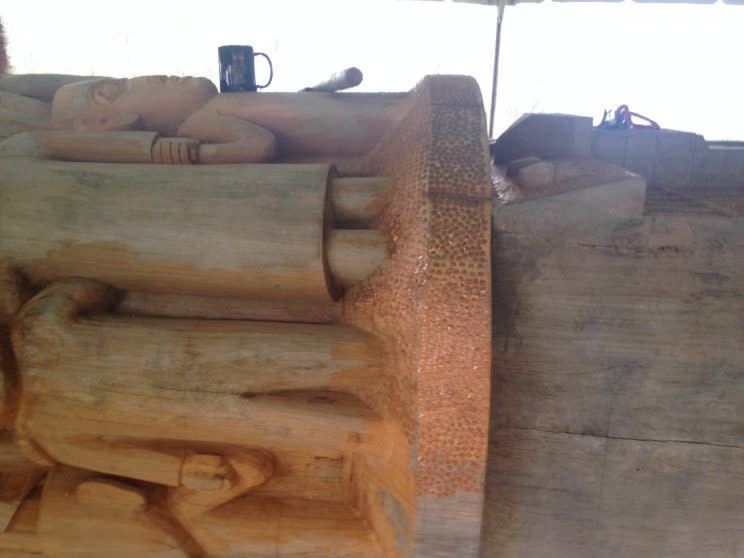
Surviving stories
The folks who’ve gone to the schools are still with us. They’re elders now, but they still have the stories. And they’re recording them, and writing them down. The pole is about that and our future and about us moving forward. Canada can’t say, “That’s enough now” or the business world, “That’s enough time spent on this, we gotta move on.” It doesn’t work like this.
Over 55,000 children died at these schools, they shut the last one down in ‘96. Young girls would be called upon to dress the bodies and then the older boys would be called upon to bury them. They were kids doing this kind of work.
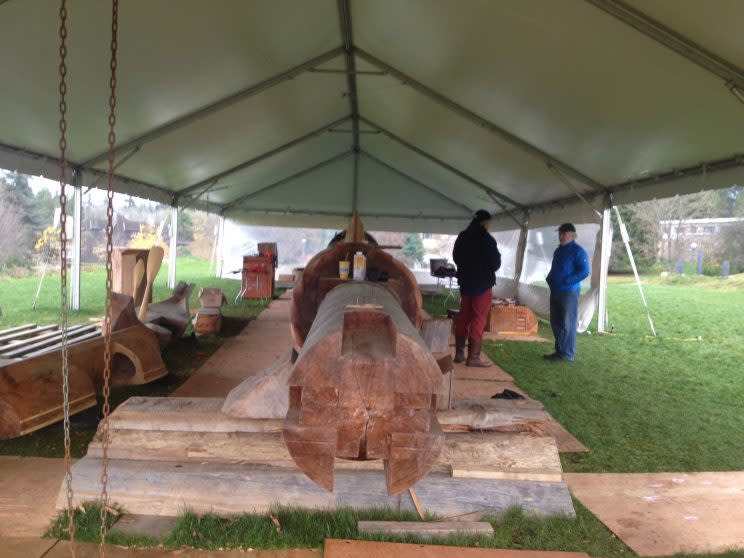
A collaborative and symbolic effort
The faces of the children (carved into the poles) are being carved by different artists from across the country.
The copper nails that are on the pole represent each child that’s passed away in the school, 57,200.
Copper is a big metal that we held up quite high. Gold was nothing to us. Even when I was a youngster, my grandfather and uncle would speak about copper.
It’s wonderful to have youth coming in and nailing nails into this project. It is about our future, and youth are our future. It is nice they are paying attention to reconciliation at the moment.
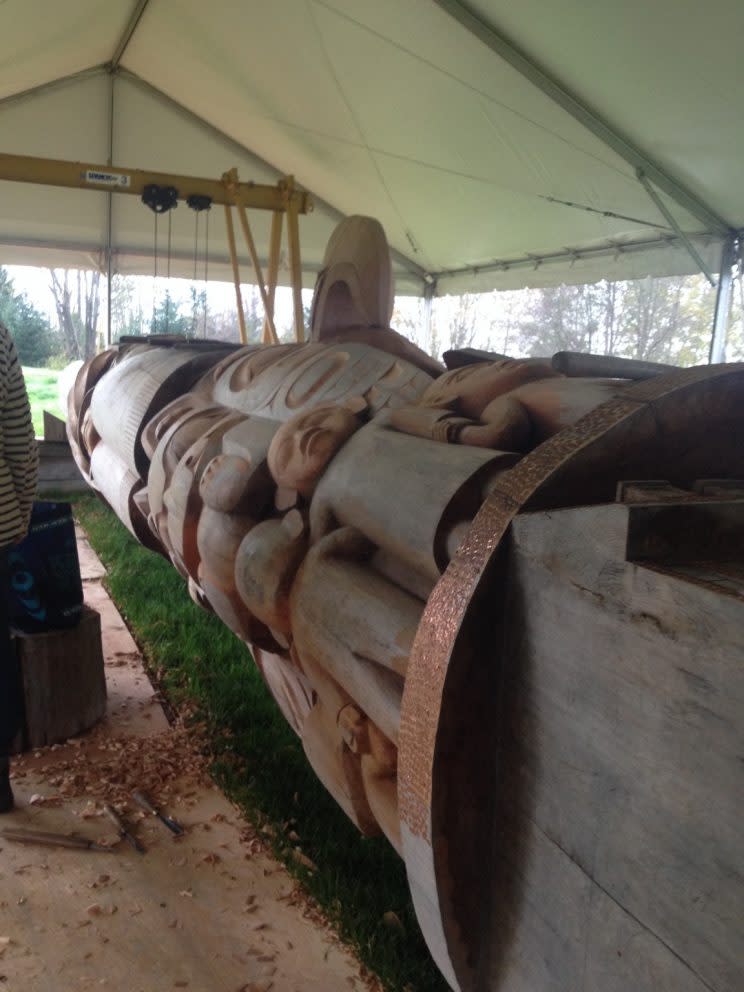
A massive undertaking
The project started in (Haida Gwaii, B.C.) two years ago, outside, with six people. We didn’t get snow but had frost a couple of time.
It was brought in to the Museum of Anthropology by barge, then we used cranes to unload it up the hill. You know when you take on something like this you gotta have big equipment. It’s been undercover for the past two weeks, we’ve been working for two years without this cover. Now we’re covered and the guys are spoiled.
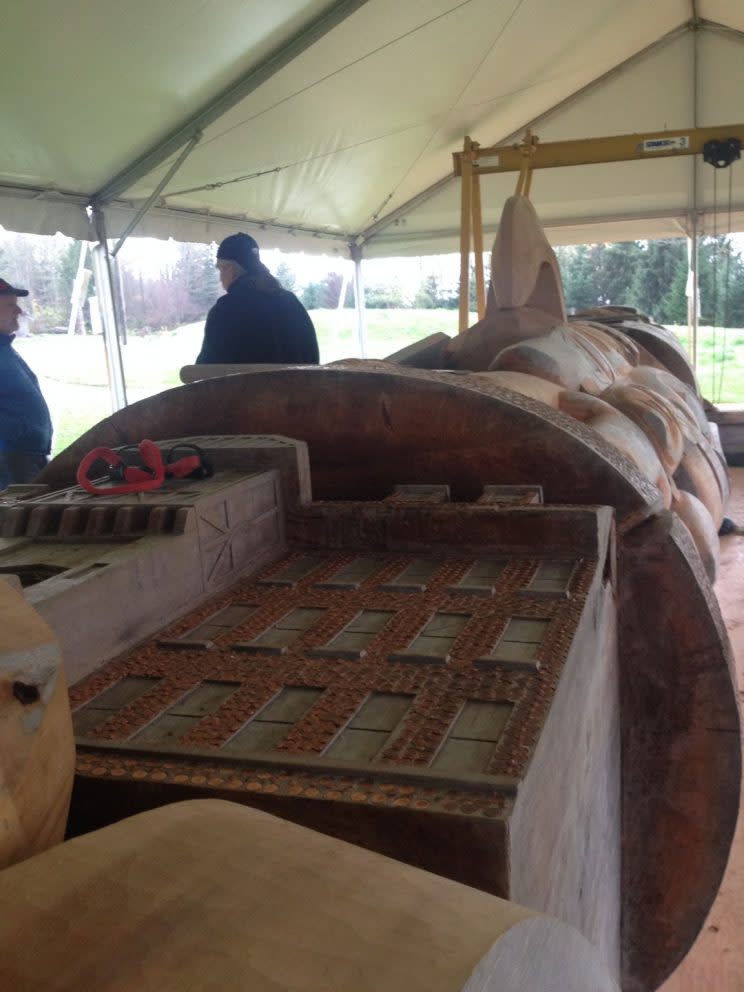
The Reconciliation Pole is scheduled to be raised on the UBC campus in March 2017.

